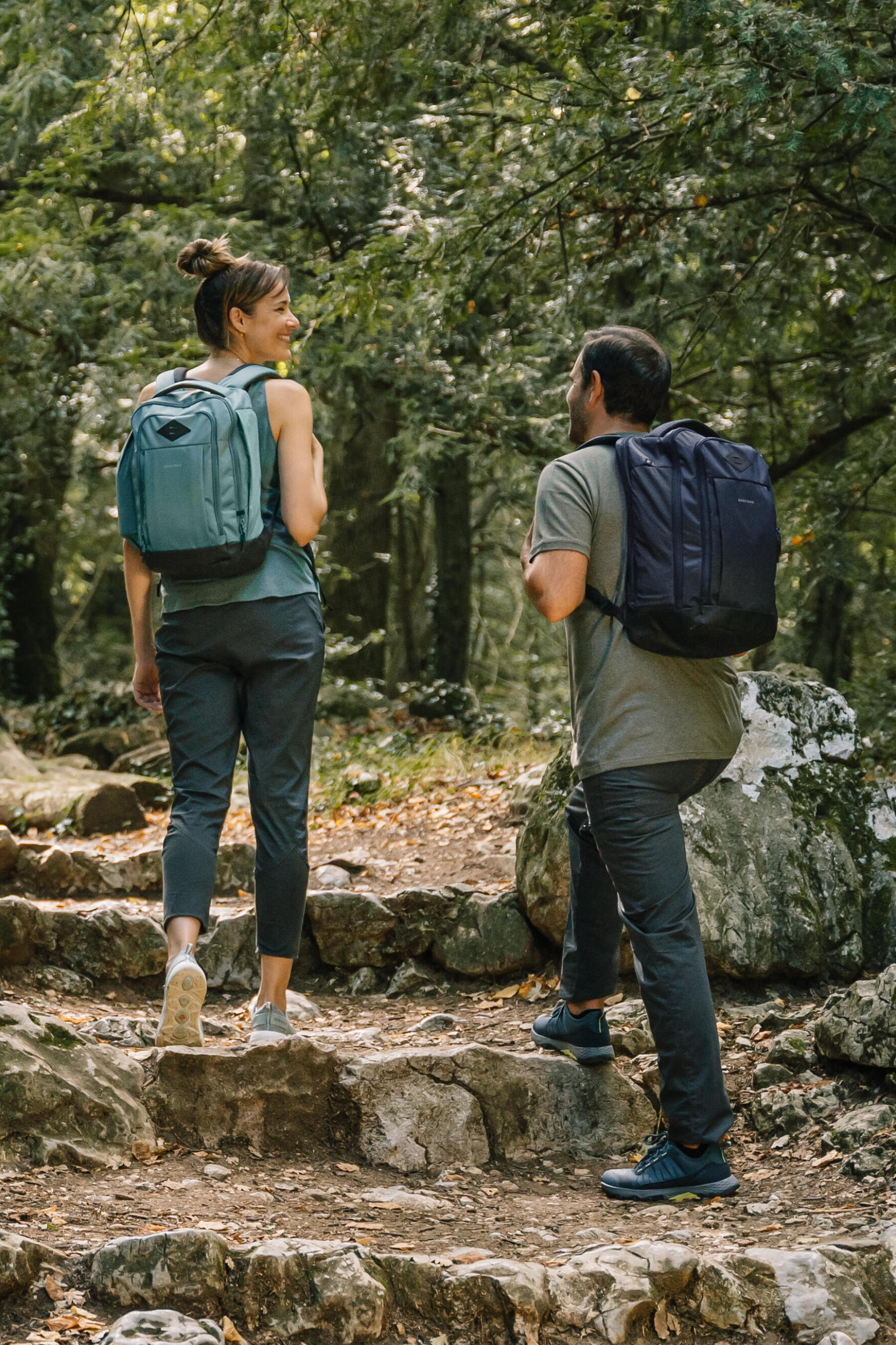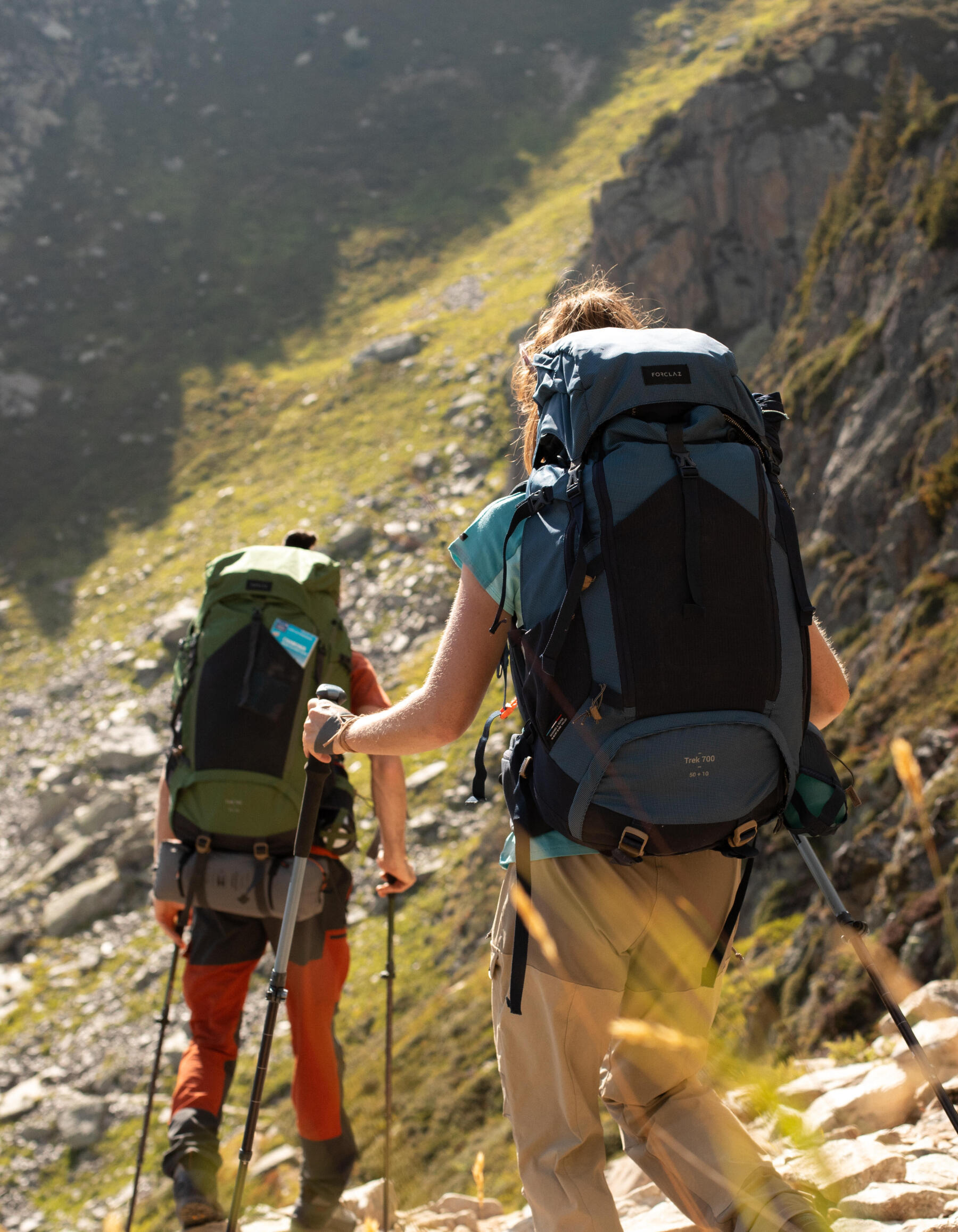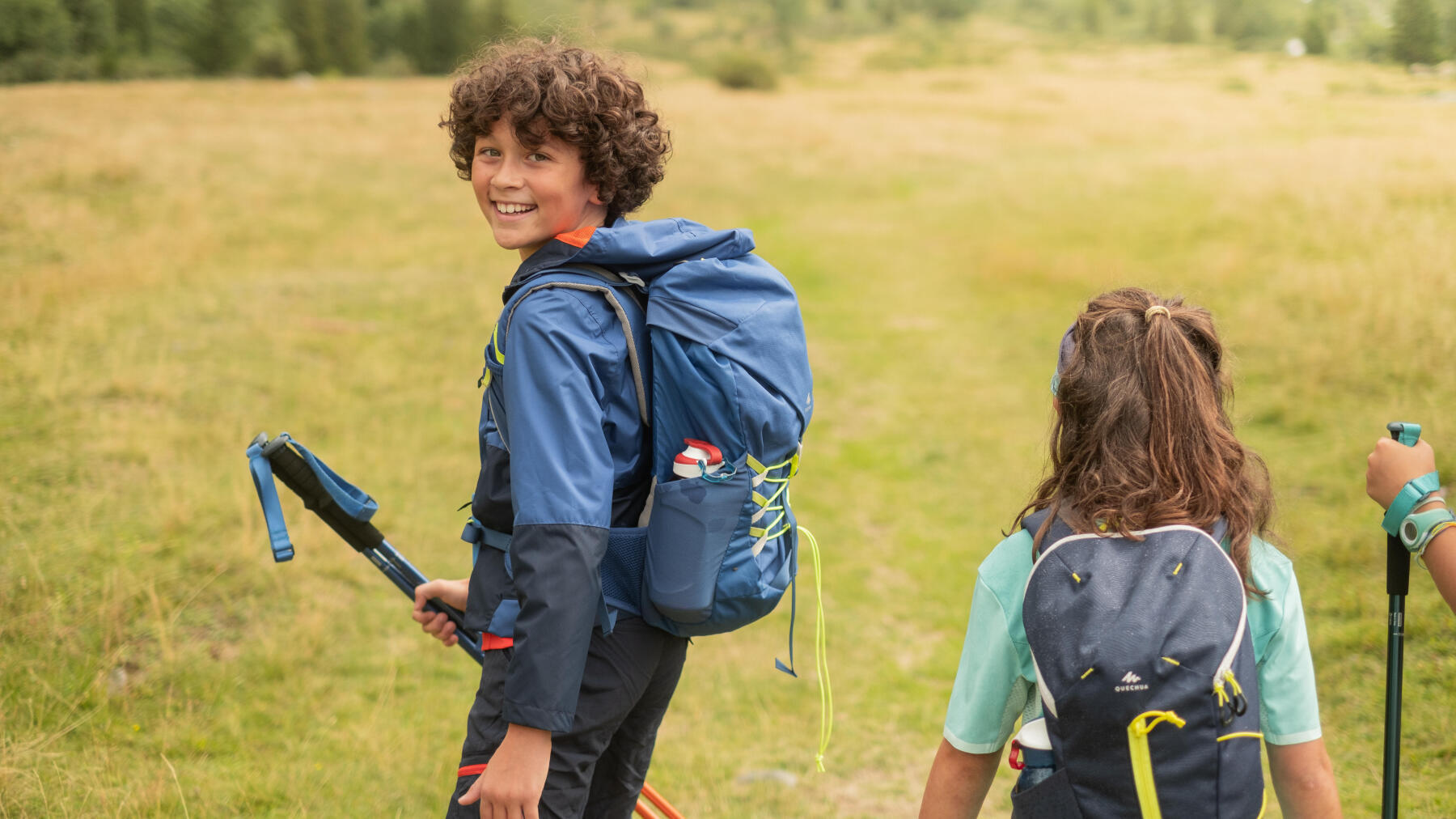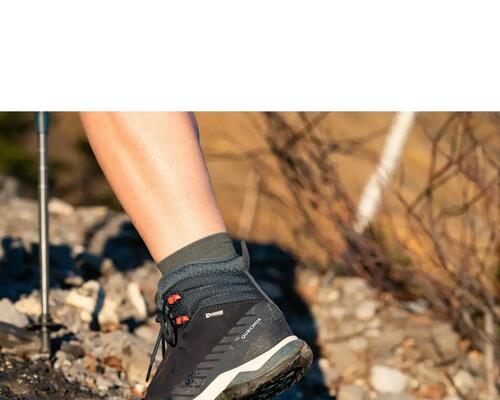1. For a few hour walks in lowlands or on gentle slopes
For this activity, you must have sufficient room to carry water, food, a windcheater or lightweight, waterproof jacket in case of showers and a fleece to cope with a sudden change in temperature.
A backpack with a capacity of 10 - 30 litres is perfect for this type of excursion. Your hiking backpack, which is specially designed for hiking, can easily accommodate a water bottle or small water pouch.
List of essentials to carry in your backpack:
- 1L of water
- A snack, cereal-type bar
- A waterproof, raincoat style, windbreaker
- A fleece if you're walking in temperatures that may fluctuate










